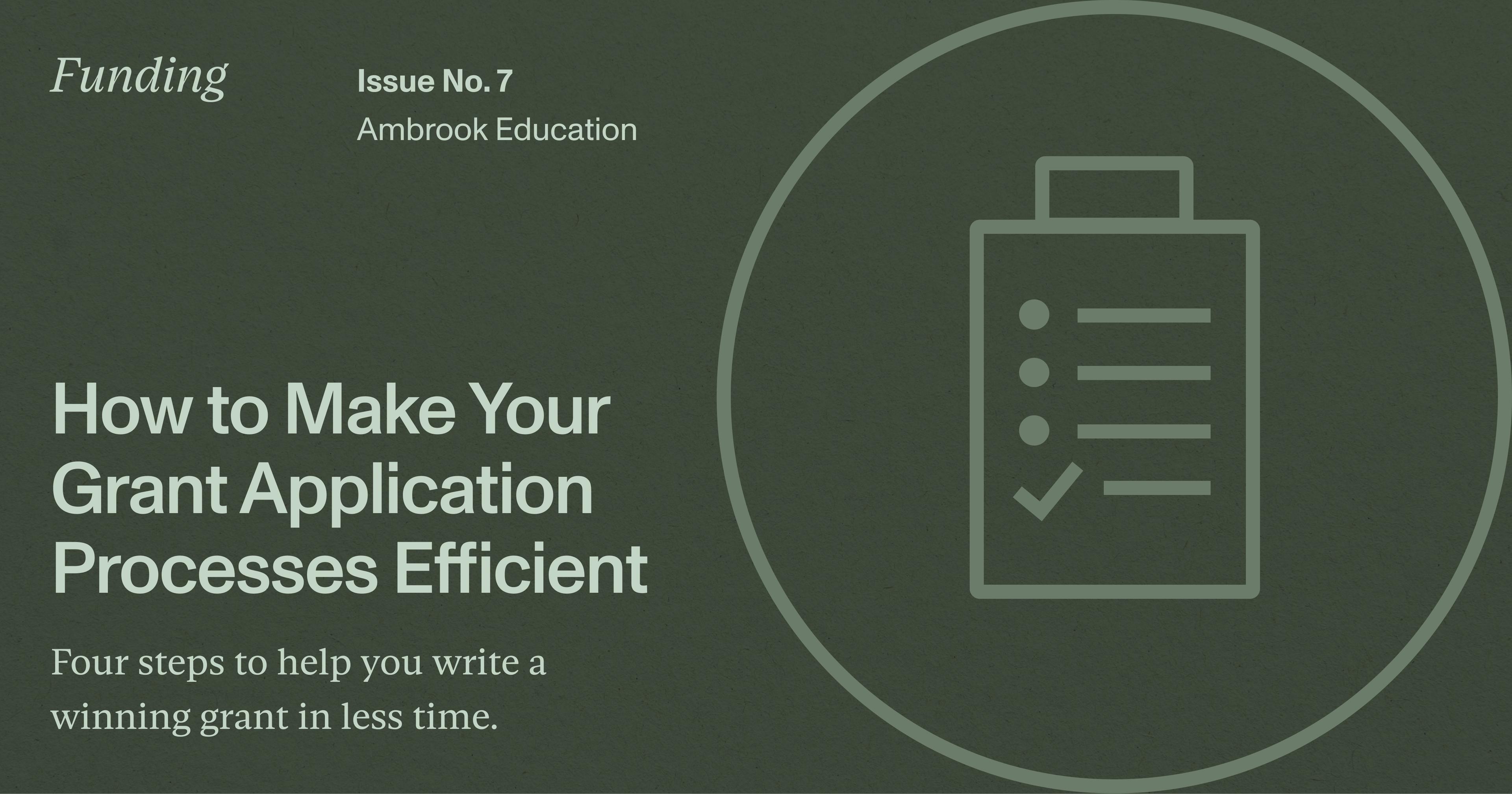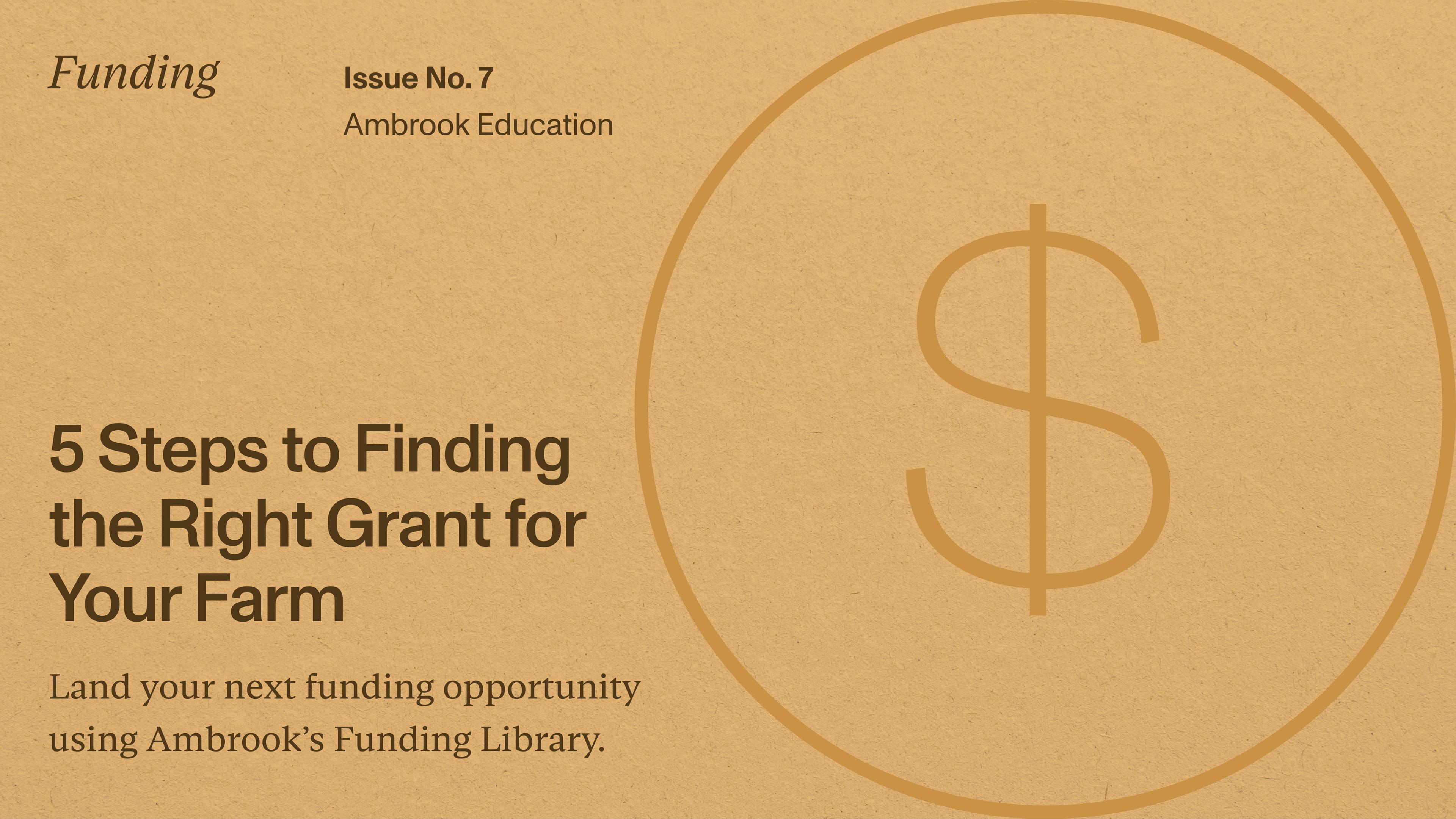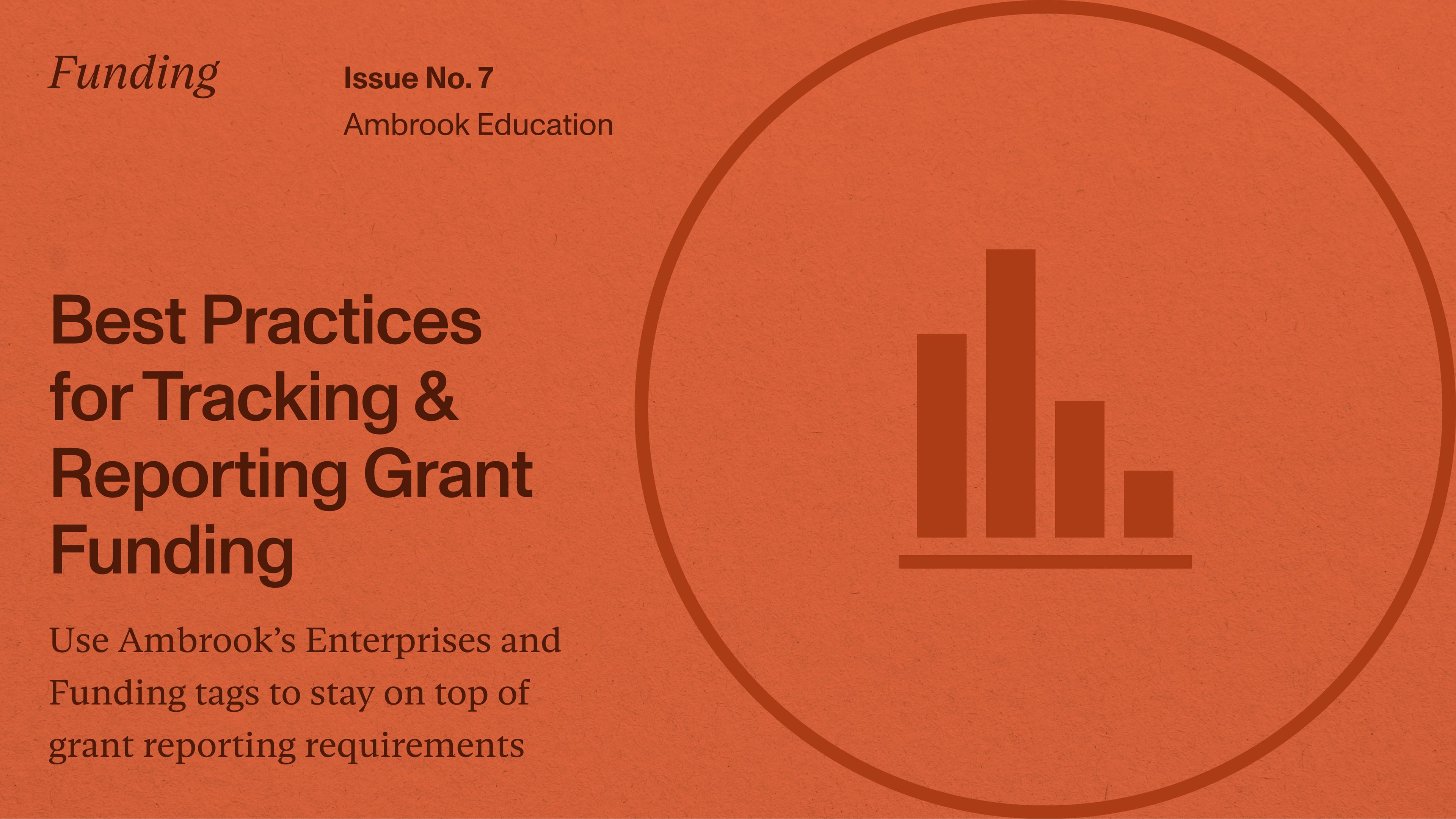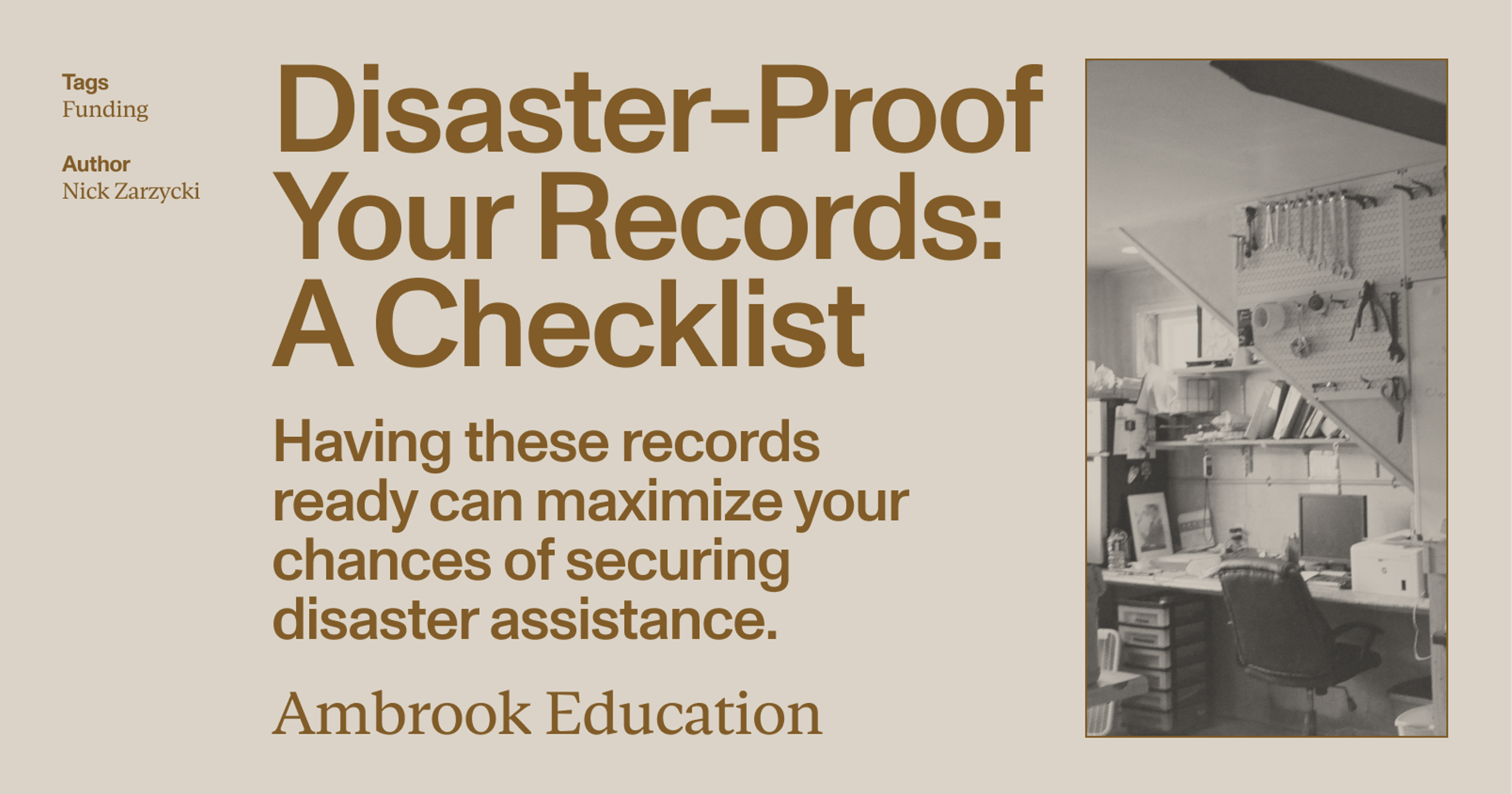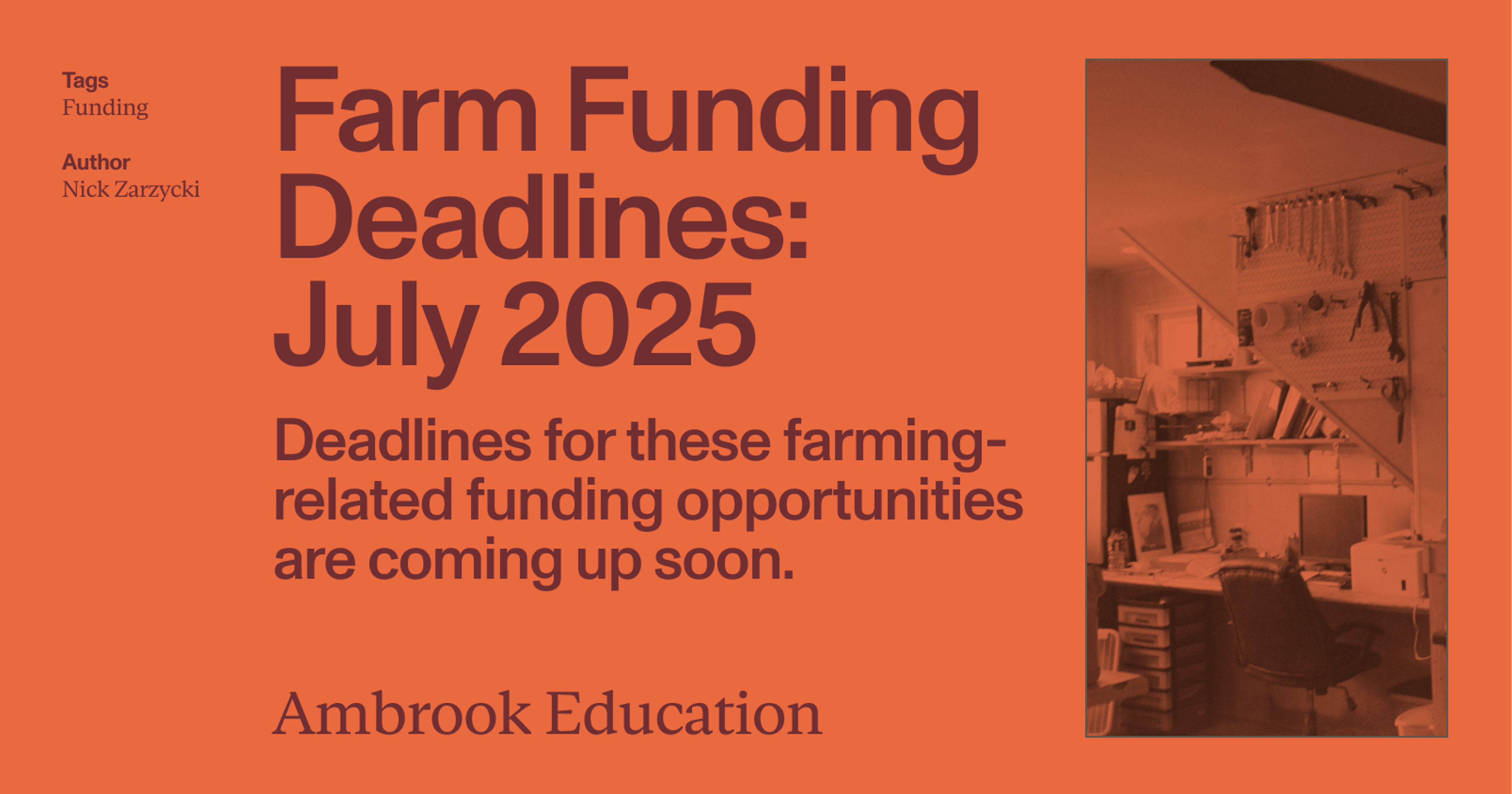Four steps to help you write a winning farm grant in less time
Grants can be life-changing for farmers, providing essential funds that can help strengthen an operation’s financial footing, enable growth opportunities, and enhance operational efficiency without the burden of repayment. However, the grant application process can be daunting and time-intensive.
To ensure your grant applications don’t sit on your desk while deadlines pass, we’ve outlined how to streamline the application process so you can create a first draft in just one sitting.
Note: We recommend you first read our article on how to find the right grant. Here, we outline how to select grant partners and projects that work with the business you have. For example, if you are raising livestock on pasture, you could invest in silvopasture or agrivoltaics to add an additional revenue stream. Our tips help you choose projects and grants that enhance your system.
Step 1: Determine the Grant Requirements
Start by identifying all of the requirements for the grant. Use Ambrook’s Funding Library to search for available grants such as:
To save you time from aggregating and digging through various Requests for Proposals (RFPs), Ambrook sorts each grant into the following sections:
Eligibility: Check if you qualify.
Terms: Understand the conditions. (This section will provide information such as whether grants are provided as up-front payments or on a reimbursement-basis).
Application Instructions: Complete pre-registration steps.
Forms: Download and organize all the required documents into one folder.
Resources: Review FAQs and additional materials.
Do your due diligence on a grant’s requirements prior to starting an application to avoid wasting time. If you’re on the cusp of eligibility, don’t hesitate to reach out to a program coordinator to inquire about their flexibility. This extra step can be the difference between passing up a dream grant and getting your next project fully funded.
Note: Some federal grants, such as those administered by the US Department of Agriculture (USDA), require you to be pre-registered with the System for Award Management (SAM) and have a Data Universal Number System (DUNS) number. Others mandate certain certifications. These requirements can take time to process so it’s best to take care of them as soon as possible.
Most grants require similar registration and financial documents so save yourself time in the future by organizing your legal and financial forms. It’s good practice to use naming conventions (i.e. year, form type, version number) to make identifying documents easy to locate and update. Create folders to group relevant docs together and streamline the logistical aspects of your application.
Sample grant application checklist:
Financial Statements: Profit and loss (P&L) statement, balance sheet, cash flow statement, tax returns, debt schedule.
Legal Documents: Business registration, operating agreements, permits, lease agreements, land deeds.
ID Numbers: Employer Identification Number (EIN), DUNS.
Project Details: Grant Proposal, Budget, Timeline
Supporting Documents (Usually optional): Resume, References, Letters of Support, Certifications
Tip: Leverage Ambrook’s Chart of Accounts feature to organize your data to serve grant reporting using the platform’s easy-to-use tagging system. You can automatically generate relevant accounting and financial documents at the level of specificity you need to answer grant application questions about your business.
Step 2: Create a Timeline
Documenting deadlines and creating a plan to stay on track is crucial to the grand application process. Avoid scrambling at the last minute and disrupting your day-to-day operations by using Ambrook’s Funding Library to identify deadlines. This will help you prioritize applications and delegate tasks if your capital stack includes multiple funding opportunities.
Work backwards from the deadline to ensure you have ample time for each stage of the application. For example, if an application requires statements of support of external references, it’s crucial to reach out as early as possible to ensure you provide reasonable time for them to write a thorough recommendation. Applications benefit from revision and multiple pairs of eyes so be vigilant in setting internal deadlines to keep your team accountable without overloading them.
Step 3: Decide Whether to Work With a Grant Writer
After you’ve assembled your required documents and mapped out a timeline, you’re ready to dive into the proposal. Pull up the grant’s RFP to create an outline for your proposal draft. Paste in all of the required sections so you have an understanding of its scope.
Take a moment to assess if you feel equipped to tackle the proposal yourself or want to explore working with a professional grant writer. As a general rule of thumb, grant writers can be the right option if a grant is high-stakes and/or you’re short on time. Grant writers can be well worth the investment when it comes to drafting proposals for high-value grants such Value-Added Producer Grants (VAPG) which can amount up to $250K.
Experienced grant writers are familiar with the format of proposals and skilled at both technical and narrative writing. They can turn your vision and budget into a compelling business case, significantly increasing your likelihood of winning a competitive grant.
Reminder: Simply outsourcing your grant proposal to a grant writer can produce mediocre results. To effectively work with a grant writer, you need to explain your project vision in detail and provide readable financial documents as well as a robust outline they can work from.
For smaller grants, however, it can be more cost-effective to write the grant yourself. Familiarizing yourself with the grant process from start to finish is a worthwhile investment considering you’re likely to apply to many more in the future. Creating a grant proposal from scratch can also force you to consolidate and clarify business goals. Besides, you’re the expert and no one knows your operation better than you do.
How do I write a good grant myself?
Identify your audience: Tailor the language of your proposal to match the assumed technical expertise of your grant reviewer. When in doubt, contact the program coordinator.
Align with the donor’s mission: Define the throughline between your project’s objectives and the donor’s values. Emphasize this connection wherever possible.
Balance brevity & specificity: Put yourself in the shoes of a reviewer to determine the most relevant information. For example, specific details about your day-to-day operations should be replaced with descriptive action statements that demonstrate how key activities will drive desired results.
Step 4: Reach out to the Grant Organization
An overlooked step that can be hugely beneficial is reaching out to the grant organization and asking for feedback on your application. Personalized feedback from reviewers can drastically increase the quality of your application and the act of reaching out can help you establish positive rapport with reviewers even if they are unable to provide assistance. Alternatively, you can prepare a list of specific questions regarding a donor’s previous investments or evaluation criteria to clarify specific concerns and strengthen your final application.
Grant writing doesn’t need to be painful. Following the above steps will make you a competitive applicant for life-changing grants without taking away from your operations.
Questions? Visit Ambrook’s Funding Library FAQ to learn more.
Look out for Ambrook’s AI Grant Writing tool to help you write award-winning grants in minutes. Coming soon.
Next Steps
Once you’ve been awarded a grant, learn:
Secure funding faster by maintaining accurate books. Get a demo on how Ambrook provides you with the tools for comprehensive farm accounting that can make grant reporting pain-free, enabling business growth and operational efficiency.

